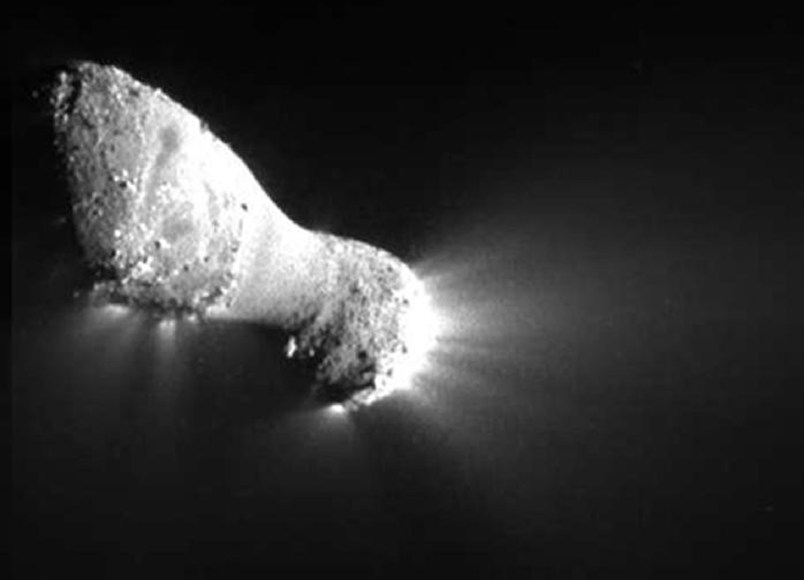BERLIN (AP) — Talk about a moving target.
Scientists at the European Space Agency on Monday announced the spot where they will attempt the first landing on a comet hurtling through space at 55,000 kph (34,000 mph).
The maneuver is one of the key moments in the decade-long mission to examine comet 67P/Churyumov-Gerasimenko and learn more about the origins and evolution of objects in the universe.
“This is absolutely a unique mission, at the top of the bill,” said mission manager Fred Jansen, comparing the complexity of landing on the 4-kilometer (2.5-mile) wide comet with that of landing a spacecraft on far larger objects like the moon or Mars.
The unmanned Rosetta probe has been flying alongside 67P since August, sending back high-resolution images that allowed scientists to shortlist five possible landing sites. They chose one — dubbed “J” for now — based on its relatively safe terrain and proximity to interesting features on the comet.
But Stephan Ulamec, manager of the Philae lander project, said even with that site “the risk is high.”
For one, scientists don’t know how hard the comet’s surface is, or how active it will be on Nov. 11. Like all comets, 67P’s icy body has begun to fizz and spray matter as it nears the sun.
Another problem is that the comet has just 1/100,000th the gravity of Earth, so the 100-kilogram (220-pound) lander will have to use harpoons and screws to avoid bouncing back into the void.
Add to this the fact that the lander was designed 15 years ago, before ESA even knew which comet it would be aiming for.
Still, there will be no dress rehearsal, said Rosetta flight director Andrea Accomazzo: “Time has come to make it happen.”
___
http://www.esa.int/rosetta
___
Follow Frank Jordans on Twitter: http://www.twitter.com/
Copyright 2014 The Associated Press. All rights reserved. This material may not be published, broadcast, rewritten or redistributed.







I hope they’re prepared to take the best oil-drilling crew our fine planet has to offer.
It better have Steve Buscemi on it.